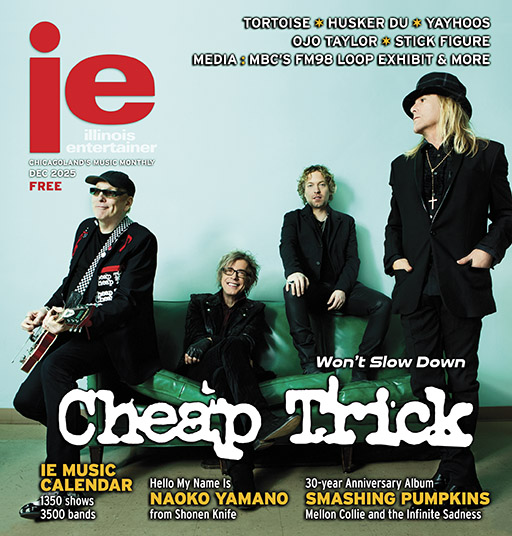Gear: November 2010
Apple
MacBook Air

They refuse to call it a “netbook,” but Apple’s new MacBook Air is a close to a netbook as you can get with a Mac.
Some Apple watchers have called the new 11.6-inch MacBook a cross between the iPad and a MacBook Pro, and the list price falls between the two for the base model. Like the iPad, the Air stores its data on flash memory, sans a hard drive. “MacBook Air is the first of a new generation of notebooks that leaves behind mechanical rotating storage in favor of solid-state flash storage,” said Steve Jobs, Apple’s CEO. “We’ve taken what we have learned with the iPad – solid-state storage, instant-on, amazing battery standby time, miniaturization, and lightweight construction – to create the new MacBook Air. With its amazing responsiveness and mobility, it will change the way we think about notebooks.” As much as we admire Mr. Jobs, we’re not completely sold on flash memory to run the sometimes quirky (Quarky?) graphics programs we use at IE, and most of our recording-studio clients would be reluctant to run Pro Tools on a flash hard drive. Maybe some day, Steve.
MacBook Air features a full-sized keyboard as well as Apple’s glass Multi-Touch trackpad found on Apple’s MacBook Pro, so you can scroll through Web sites, flip through photos, and resize or rotate images all from the trackpad. Its built-in FaceTime camera, mic, and stereo speakers are perfect for video calls with iPhone 4, iPod Touch, and other Macs.
Powered by an Intel Core 2 Duo processor and NVIDIA GeForce 320M graphics, Apple’s aim was to provide the most mobility, battery life, and performance in a compact notebook. Also included is Display Port to connect to a flat-screen display, projector, or HDTV, a 802.11n Wi-Fi network connection, Bluetooth 2.1+ EDR for wireless peripherals, and two USB ports making it easy to sync and charge an iPad, iPhone, or iPod while using another device. Upgrading to the 13-inch model gets you an SD card slot. The 1.4 GHz 11-inch MacBook Air with 2GB of memory and 64GB of flash storage starts at a suggested retail price of $999 while the 128GB model lists for $1,199. This fresh Air comes with Mac OSX Snow Leopard, and iLife ’11, Apple’s creative suite that includes a new GarageBand for making demos and song sketches. The 13″ inch Air model comes with more bells and whistles, but we’re most impressed by this new “entry-level” model. Just remember to back up your flash drive. Visit www.apple.com for info.
Sennheiser
SKM2000 Wireless Microphone
Fifteen years ago, they did it for the Nookie – now they’re doing it for the money. The original lineup of Limp Bizkit is reunited, and the band has played a range of festivals in advance of their new studio album, Gold Cobra. With a new endorsement deal, the band now relies on Sennheiser microphones to cut through its tremendous stage volume. “These guys are all on wedges and side-fills. It is no-joke loud up there,” said George Squiers, their monitor engineer in a statement. Frontman Fred Durst sings and raps into a Sennheiser SKM 2000 wireless transmitter with an MMD 935-1 cardioid capsule, which successfully cuts through Limp Bizkit’s often thick sound to put Durst out in front. “As a monitor engineer, I have three requirements of a vocal mic,” said Squiers. “I have to be able to make it loud, clean, and stable. It was apparent the very first time I pulled the 935 up that it would perform flawlessly on all three counts with only minimal EQ. There were no problems then and there haven’t been problems since.” Nookie, Nookie. List price for the SKM2000/MMD combo wireless is $1,200, though you’ll probably find them street in the $900 range. Visit www.sennheiserusa.com for info.
— David Gedge











